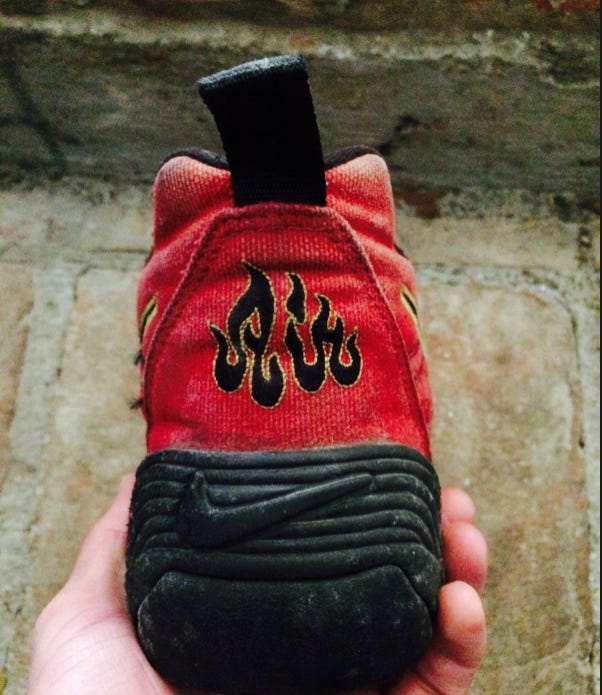🧵 Nike’s Cultural Oversight: Twice Burned by the Same Script
How a design detail led to global backlash—twice—and what brands can learn from it.
These days, when brands are selling to people all over the world, being culturally aware isn’t optional—it’s a must. And yet, even the biggest brands can get it wrong. Nike, the sportswear giant, has found itself at the center of controversy not once, but twice, for the same issue: an alleged resemblance between its logo design and the Arabic word for "Allah" (الله).
Let’s take a closer look at what happened, why it matters, and what it cost.
🥇 First Incident: The Air Bakin’ Backlash (1997)
Back in 1997, Nike launched the Air Bakin’, a basketball shoe featuring a flame-like "Air" logo on the heel. Unfortunately, members of the Muslim community noticed that the stylized design closely resembled the Arabic script for "Allah."
The backlash was swift. Advocacy groups like the Council on American-Islamic Relations (CAIR) demanded action, and Nike responded by:
Recalling 38,000 pairs of the shoes.
Issuing a formal apology.
Donating $50,000 to an Islamic elementary school in the U.S.
It was a costly lesson in cultural oversight—but one that should have stuck.
🥈 Second Incident: Air Max 270 Controversy (2019)
Fast forward to 2019, and history repeated itself.
This time, the Air Max 270 featured a logo design on the sole that again resembled "Allah" in Arabic script. A Change.org petition created by Saiqa Noreen quickly gained traction, surpassing 14,000 signatures and calling for a worldwide recall of the model.
“It is outrageous and appalling of Nike to allow the name of God on a shoe,” Noreen wrote. “This is disrespectful and extremely offensive to Muslims and insulting to Islam.”
Nike issued a public statement:
“Nike respects all religions and we take concerns of this nature seriously. The AIR MAX logo was designed to be a stylized representation of Nike's AIR MAX trademark. Any other perceived meaning or representation is unintentional.”
While Nike did not officially recall the shoe this time, the reputational damage was already done—particularly in key Muslim-majority markets.
💸 The Cost of Cultural Blind Spots
Although Nike has never disclosed exact figures, analysts estimate the financial impact of such controversies runs into the tens of millions. In the 1997 case alone, the recall, production halt, and rebranding would have been a multimillion-dollar undertaking.
The 2019 incident added a new dimension: digital virality. In the age of Twitter, TikTok, and petitions that go global in hours, reputational damage can snowball fast—and stay online forever.
Costs aren’t just financial, either. Brand trust, consumer loyalty, and market positioning take serious hits, especially in culturally sensitive regions.
🧭 Lessons for Global Brands
Nike’s missteps highlight the need for robust cultural QA processes. For global brands, it’s no longer enough to vet for market fit or style appeal—designs need to pass a cultural and religious sensitivity filter as well.
What can brands do to avoid these pitfalls?
Involve diverse design teams from early concept stages.
Invest in linguistic and semiotic analysis.
Perform regionalized reviews before global launches.
Create feedback channels for early issue detection.
🏁 Final Thoughts
Nike may not have intended any offense—but in branding, intent often takes a backseat to impact. Getting it wrong once is a mistake. Getting it wrong twice? That’s a system failure.
It all comes down to a simple principle:
“Design globally, but review locally.”
It’s time for Nike—and every brand playing on the world stage—to take that to heart.
Thanks for reading. If you enjoyed this post or learned something new, hit the ❤️ or share with someone who works in branding, design, or marketing. They’ll thank you later.






